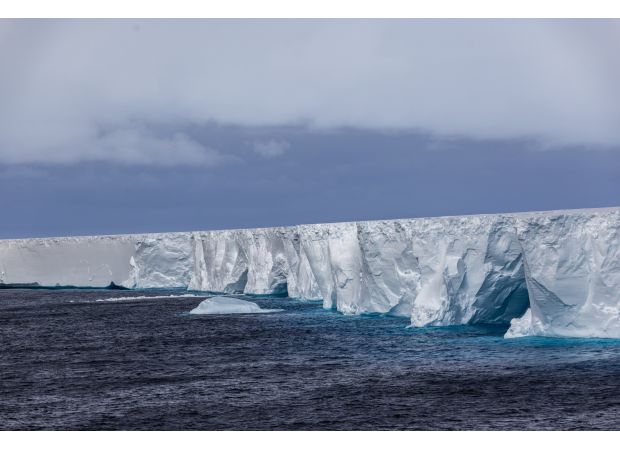A colossal trillion-ton iceberg adrift in the ocean after breaking off.
A gigantic iceberg is twice as big as London.

As we look ahead, we can see that there's a lot to look forward to. But before we move on, let's take a moment to reflect on what we've just seen. We've been witness to something truly remarkable - an enormous iceberg, twice the size of Greater London and weighing over a trillion tonnes, is attempting to break free from its frozen prison.
This colossal chunk of ice, known as A23a, has recently started to spin for the first time in almost three decades. It's been stuck in a vortex off the coast of Antarctica since it first broke free in 1986. Despite its initial escape, A23a quickly found itself trapped on the seabed of the Weddell Sea in the Southern Ocean due to its immense size.
Although it had been motionless for nearly thirty years, A23a started to slowly move south in 2020. However, its progress was halted when it became caught in a Taylor Column earlier this year. This is a natural phenomenon where rotating water above an underwater mountain can hold an object in place. This is what had been keeping A23a stationary for so long.
But after months of being stuck, satellite images have finally revealed that the megaberg has broken free from its watery prison. Dr. Andrew Meijers, an oceanographer from the British Antarctic Survey, shared his excitement at this recent development, stating, "It's thrilling to see A23a on the move again after being stuck for such a long time. We're curious to see if it will follow the same path as other large icebergs that have calved off Antarctica."
The experts at the BAS predict that A23a will continue to drift further into the Southern Ocean, eventually reaching the Atlantic. Once it reaches these warmer waters, the iceberg is expected to melt due to the increased temperatures. This is a natural process that occurs with most icebergs, and it will provide essential nutrients to the surrounding waters.
The South Atlantic Ocean, where A23a is headed, is typically around 5°C, which is significantly warmer than the Southern Ocean. This will cause the iceberg to melt at a faster rate. But before it disappears entirely, the megaberg will be studied by researchers aboard the RRS David Attenborough, a cutting-edge research vessel that was built in 2024.
Laura Taylor, a biochemist on board the ship, is eager to explore the impact that A23a will have on the surrounding ecosystem. She explains, "We know that these massive icebergs can provide vital nutrients to the waters they pass through, creating thriving ecosystems in otherwise less productive areas. However, we still have a lot to learn about the influence that specific icebergs, their size, and their origin have on this process. That's why we have taken water samples from behind, adjacent to, and ahead of A23a's path. These samples will help us understand what kind of life can form around the iceberg and how it affects the balance of carbon in the ocean and the atmosphere."






